How to Start a Blog Strategy for Your SaaS Business

SaaS businesses have a few advantages over other kinds of businesses. As an online service, you're always available for new visitors to investigate and convert themselves into leads, and leads to dig deeper and convert into customers. You can be asleep, and gain a new customer in the middle of the night.
Sure, this presents a few unique challenges – how do you provide support around the clock? – but the benefits generally outweigh the drawbacks. It's no wonder that so many people are operating SaaS businesses these days.
Whether you're a new SaaS startup or a more established business looking to get into content marketing, a blog is a key component of your success. Running a blog in a way that draws in users, pulls them deeper into your orbit, and converts them is an excellent way to grow your company, but it requires an overall blogging strategy. You can't just dive in and start writing content without a plan.
Luckily, SaaS businesses have some advantages in this realm as well. Developing a blogging strategy is relatively uncomplicated, and it's a well-trodden path, so you have a lot of examples of what to do to succeed.
Let's get started with some best practices!
 30 Second Summary
30 Second Summary
You'll find several important advantages in running a SaaS business blog. You should focus on evergreen topics that stay relevant for years, keeping them updated as needed. You have to understand your customers' pain points and address them directly in your content. While you need to promote your service, you should avoid being too aggressive - instead have value first. You can reach customers worldwide if you adapt to different languages and currencies. You'll want to study your competition to create better content, and you have to track your results with analytics to improve over time.
Focus on Evergreen Topics
Normally, you can categorize content into two groups: evergreen content and time-sensitive content. Time-sensitive content is content that has a lifespan. It's useful for a few days, weeks, or months, but after a while, it falls off drastically. Think of things like news reports, rumors, predictions for the year, or promotion for an event. They're relevant for a short time, but once their relevance fades, you can't do much with them.
SaaS businesses generally don't need to concern themselves with time-sensitive content. Oh, you can create some of it now and then, build a branch of your blog for news and industry coverage, but it's not necessary for blogging success.
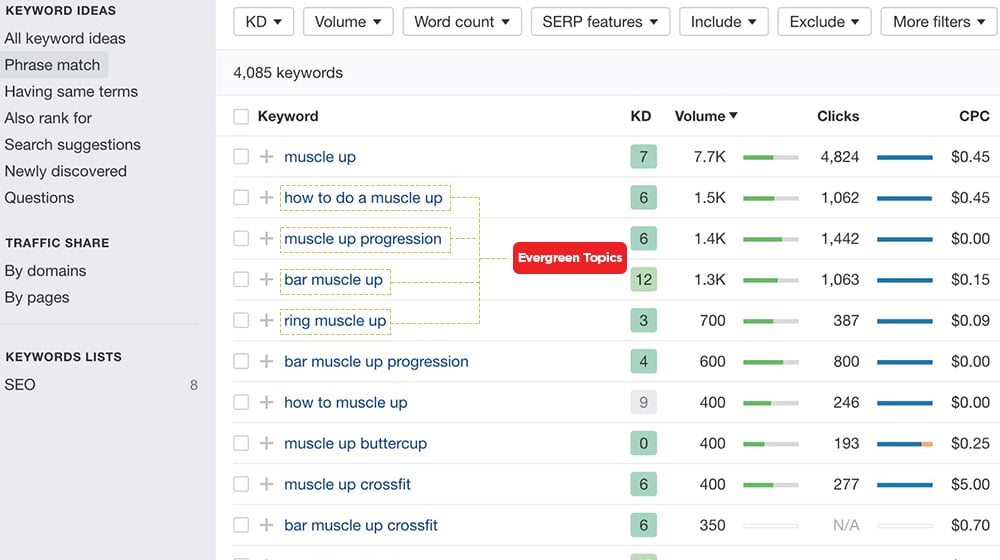
Instead, focus on evergreen content. Evergreen content is content that is always – or as always as it's possible to be in our fast-paced world – relevant.
Take a look at a powerful SaaS company like, say, Ahrefs. Their blog is packed full of evergreen content. Topics like:
- Lead generation tactics and examples
- How to perform local keyword research
- Best practices for H1 tag usage
- Marketing KPIs worth tracking
These are all evergreen topics. Whether you're reading the post this month, next year, or four years from now, those pieces of content are going to be relevant. Unless Google somehow decides local search is no longer worth supporting, or that H1 tags shouldn't exist, but that's vanishingly unlikely.
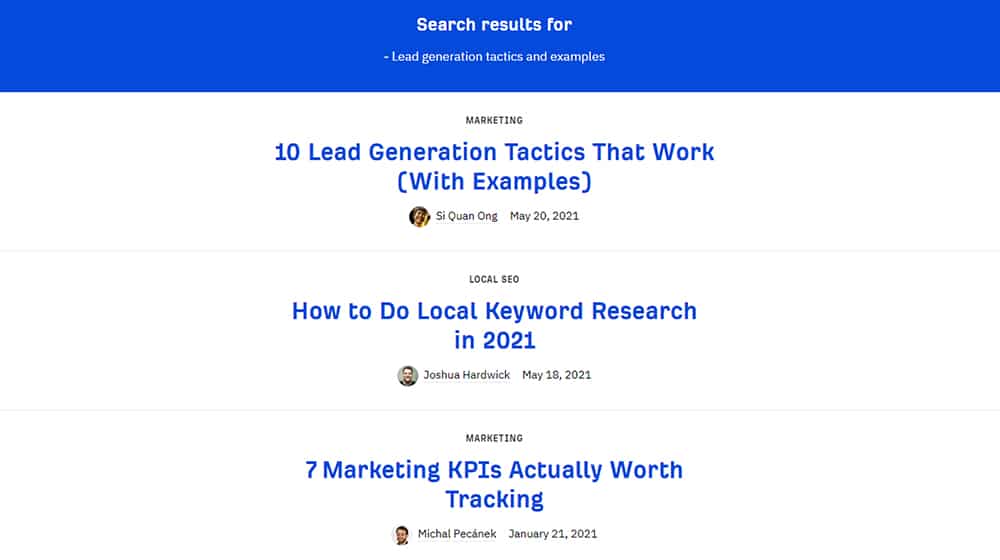
Sure, the exact relevant information might change. The data offered by Google Analytics could change, and that could change which marketing KPIs are worth tracking, but that's why companies like Ahrefs keep their posts up to date. When you check those posts a few years from now, chances are pretty good that they'll have been updated with new, relevant information.
This is your goal. You want to cover topics that are of evergreen value and keep them up to date.
Why? Long-term value. Blogging, as I always say, is a long-term strategy. You're not going to start a blog and get an immediate influx of traffic from Google. Rather, it's going to take months or years for your blog to start independently generating traffic, and longer still to generate enough traffic volume to be measurable in your conversion rates.
However, once it gets going, it can snowball. It might start small, but it will grow and compound. Like any long-term investment, the earlier you start and the more value you pour into it, the greater the results you'll have over time.
Time-sensitive content doesn't have that staying power, and that means it doesn't support your goal of long-term value. If you focus on evergreen content exclusively, every post you create (as long as you keep it updated) will remain valuable for years to come.
Learn Customer Pain Points
Your company offers a service, and that service fulfills a need. What is that need? What drives a user to seek out a solution that you offer? What do you offer over your competitors, that can convince users to go with you?
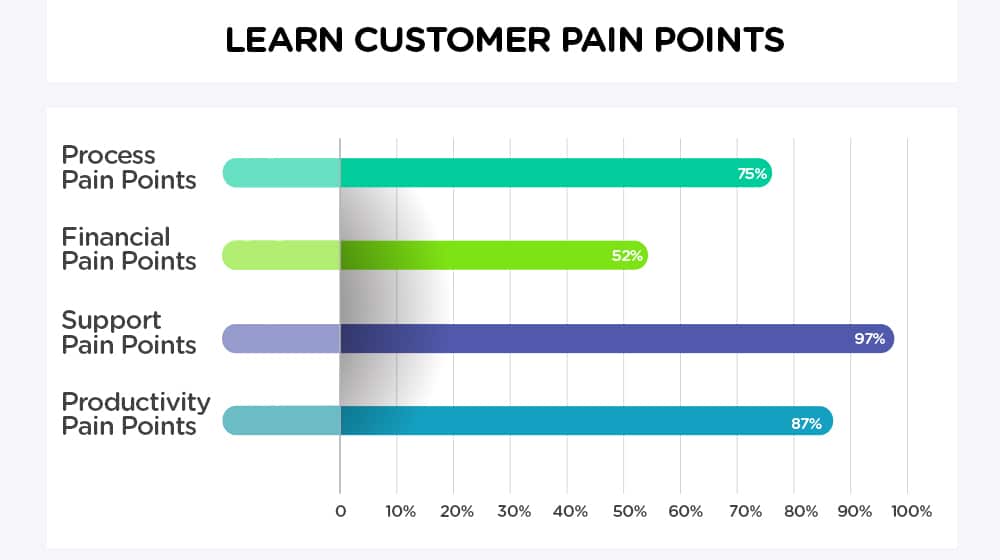
Pain points are an especially important part of content marketing for SaaS businesses, particularly because there are likely many other services that offer something similar to what you do. You need to stand out, and there are two ways to do that.
- Figure out what, specifically, your target users need, and laser-focus your marketing on that.
- Figure out what you have that your competitors don't, and promote that heavily.
Both of these are important to keep in mind as you develop your blog content. Every post needs to know who it is trying to reach, what value it is trying to give them, and how it can lead the user to you.
Paying careful attention to what your customers were doing before they found you and what they were searching for when you came up is key here. That way, you can identify keywords that align with customer interest, and you can target those more heavily throughout your marketing.
Be Promotional, Properly
Google isn't a big fan of blogs that are hyperfocused on promoting themselves to the exclusion of other sources of value.
If every blog post you write is a topic such as this one, you're going to have a bad time:
"Here's a problem, subscribe now to see the solution!"
Yet, how can you grow your business if you don't promote yourself?
Some of the biggest mistakes I see bloggers making have to do with promotion. Some of them try to make sure that every post they write is focused on their service and their niche. That's often too narrow and won't get you the kind of audience you want.
Others abjectly refuse to acknowledge the rest of the market. They know they can't stand up to the competition, so they pretend the competition doesn't exist. It's like "if we don't mention them, maybe our users won't find out they exist" or something? I'm a bit unclear on why business owners do this because there's a 0% chance that your readers won't find your competition. You need to differentiate yourself, not try to pretend you're the only one in the room.
Being promotional is important, but you have to do it right. Showcasing the value you bring to the table, offering value without requiring a sign-up, attracting users with the value of your free content, that's how you do it.
We create blog content that converts - not just for ourselves, but for our clients, too.
We pick blog topics like hedge funds pick stocks. Then, we create articles that are 10x better to earn the top spot.
Content marketing has two ingredients - content and marketing. We've earned our black belts in both.
Your calls to action should be subtle. Abrasive pop-ups, locked content, auto-playing videos, interruptions, noises; all drive users away quickly. You want your call to action to be there when a user is ready to notice them, but not have them be disruptive along the way.
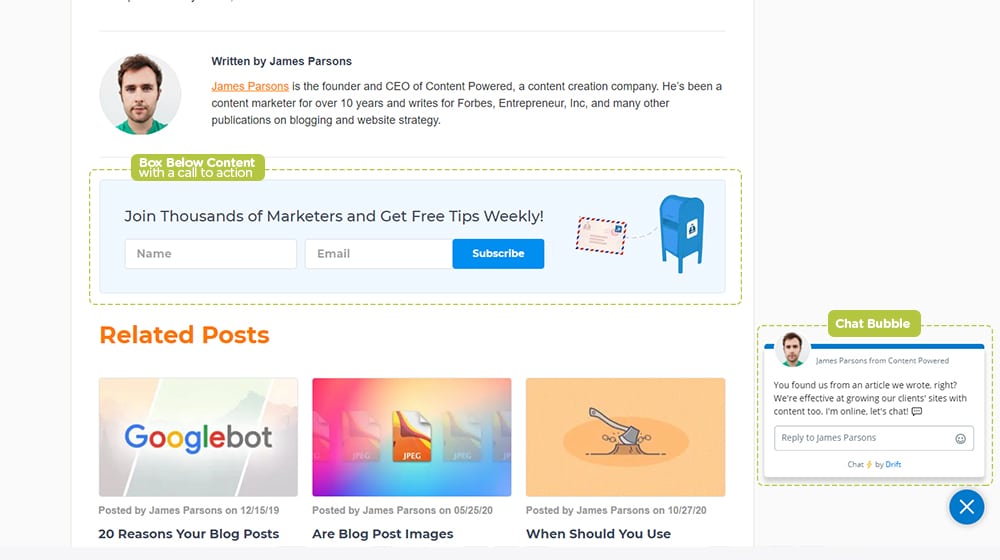
It helps if you can be very narrow about who you're targeting with each blog post, and work your calls to action into those posts.
For example, if you're writing a blog post about a common pain point and why it needs to be solved, you're still in the informational phase. Users are learning about a problem they have that they might not have even known was a problem and that the problem has a solution. This isn't the right time to promote your service, because the user is not prepared to make a purchase. Instead, you promote other content that further convinces them that a solution is beneficial, and then you focus on the sales.
In general, your first and foremost goal should be building traffic and awareness. Only once you have that traffic should you start worrying about optimizing for conversions.
Think of it this way. Taking your conversion rate from 10% to 15%, when you only have 10 monthly visitors, doesn't even gain you a full new user each month. Leaving your conversion rate at 10%, but increasing your monthly visitors from 10 to 100, gives you a 10x increase in conversions.
I'm not saying boosting your traffic will always be the right choice. It's a balance you need to strike, figuring out which focus is the one that will offer the most value and focusing on that.
Broaden Your Horizons
SaaS businesses are entirely digital, which means you have one advantage that many other businesses do not: you can reach anyone in the world who has an internet connection. You could be a small company operating out of Kansas City and have customers in Texas, California, Alberta, Brazil, India, China, and Russia. Could.
How many of those other countries are areas you can reach with your content as it stands? In the right circumstances, you could be a globally available brand. That only works if you can deal with those customers, though.
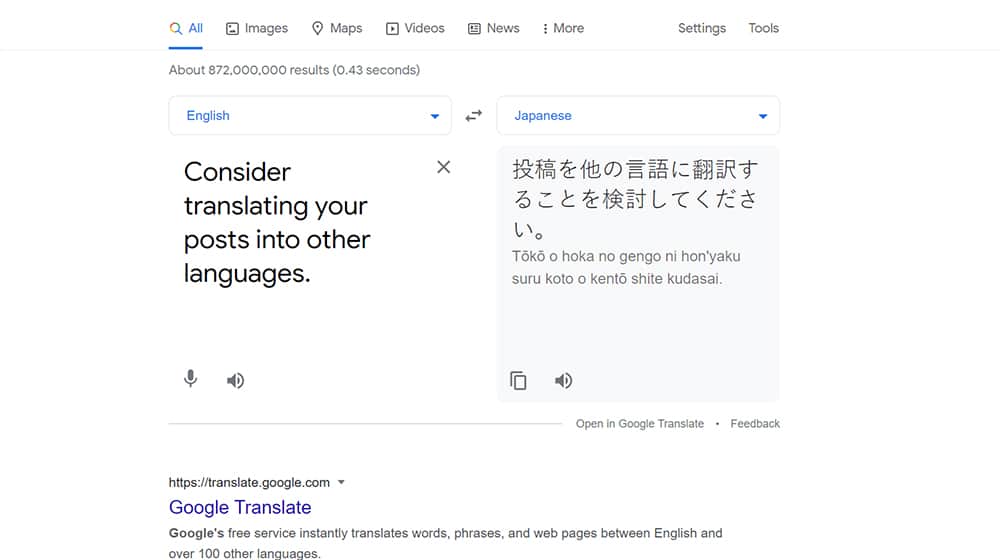
That means:
- Consider translating your posts into other languages. I don't recommend using automatic or machine translations, though, which means paying a human translator. Unfortunately, that can get expensive, so figure out which languages are the most worth targeting and limit yourself to those.
- Offer a live chat assistant 24/7. You can pay services to do this for you, or you can use a machine-based AI chatbot or a combination of the two. Offering the availability to answer questions even after-hours is ideal.
- Make sure you can accept various currencies. It does you no good to translate your content into Chinese if you can't accept payments in Yuan, or from China at all. Additionally, make sure you offer the ability to convert your pricing into those currencies, so users don't have to do the conversion themselves.
Treating a SaaS business as a local business is just needlessly restricting yourself. You're entirely online, entirely a service, so why not take advantage of that fact?
Acknowledge the Competition
I don't mean that you have to mention your competitors by name or anything. Just recognize that you're not alone in your niche.
SaaS businesses can be extremely profitable, but that means they are also extremely competitive. Your competitors will be trying to use the same strategies and reach the same users you are.
This is bad because it means it's more difficult for you to capture that audience. It's good because you can watch what those competitors are doing and outdo them.

My favorite strategy in blogging is 10x content, also known as pillar content. Identify a good piece of content your competitors have published, and write a blog post of your own on the same subject. Then do it better.
- If they went broad in their coverage, go deeper. Take their conclusions, accept them, and dig deeper into what they mean.
- If they went deep with their coverage, go broader. How does their conclusion affect other concepts in the niche? Does it affect others in other industries, other target groups?
- Try to outdo them on the topic that they wrote about. Go deeper, go broader, and expand beyond them in every direction.
- Out-do them numerically. Is their content 2,000 words long? Write a 3,500-word post. Did they write a top 20 list? Try a top 40 list.
By adopting the attitude of "anything you can do, I can do better", you can position yourself as an even better authority than they are.
Just be aware that they very well could be doing the same thing to you. It can quickly become an arms race. You can't keep going back and forth with the same posts, because there will be diminishing returns. You can, however, keep poking at their weak points and trying to out-maneuver them.
Implement Analytics and Tracking
Everything I've mentioned above relies on one thing above all else to be successful: data.
Google Analytics is just the start. Add UTM parameters to everything. Add custom conversion events for Google Analytics to track. Use analytics offered by other platforms you use, like your social media accounts. Monitor your Search Console and look for what keywords people use to find you. Use other analytics tools like a heatmap to analyze your user experience. Heck, send out surveys to your customers and visitors just to see what feedback they have to offer.
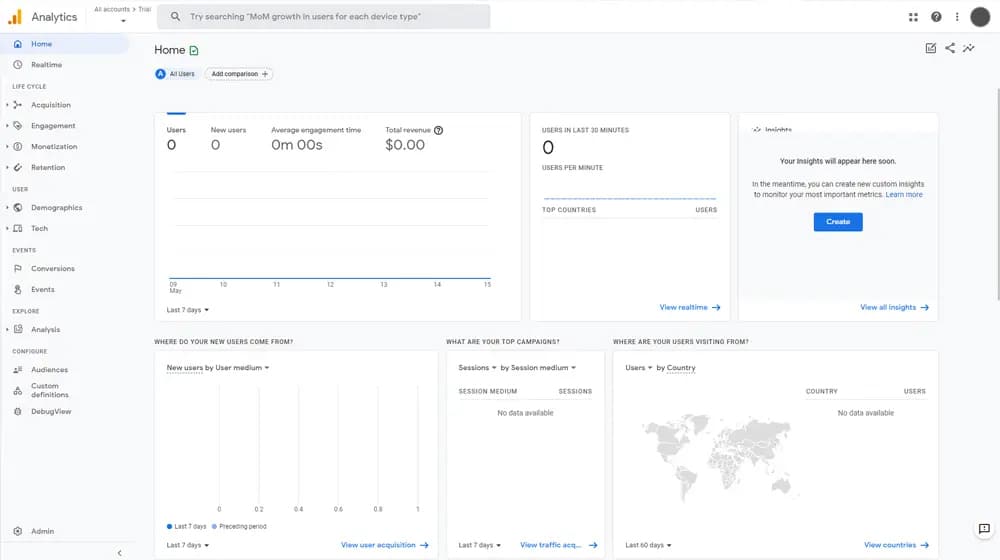
You're looking for the important information you can use to make decisions. Which blog posts attract the most traffic? What do users do once they land on your page? What pain points attract the most attention? Which signups are worth the most money or attract the best customers?
There's a ton of nuance to data harvesting and analysis. I'm only scratching the surface with this section. Suffice it to say, that's a topic worth a post of its own.
Becoming a SaaS Success
We're in a bit of a golden age for SaaS businesses. The proliferation of broadband access, especially via mobile devices, around the world, is making it a great time to offer a service those people can use. It's all a matter of reaching them in the right way, at the right time, with the right argument. You can do it, with content marketing, but it's better to start now than later. What are you waiting for?
I've grown dozens of SaaS businesses from 0 visitors to 10,000+ organic visitors per day solely through blogging - I'm happy to answer any questions you might have! Let me know in the comments below. I reply to every comment I receive here and would love to hear from you.



 30 Second Summary
30 Second Summary


August 03, 2021
I am starting a business in ophthalmology Saas, i.e., Diabetic Retinopathy detection, using an Autonomous (AI-based) inference engine. I am targeting General Practitioners right now.
A couple of competitors stand out—Eyenuk and IDX-DR in the US and Remidio in India.
I am an Engineer by profession and have a Ph.D. in Engineering. I have the technical know-how to build an end-to-end solution but need some insights into the healthcare business. I want to expand my offerings into detecting Glaucoma and age-related macular degeneration soon. I need help from you.
August 03, 2021
Hi Zia!
That's one heck of a niche, though we do have one client in a similar space.
The biggest roadblock to these articles is that Google likes to hijack the search results any time they detect something serious in health or medicine. It makes sense when you put yourself in their shoes - they don't want users landing on some random sites that give them health advice, which could be potentially dangerous. This phenomenon (part of the Google "Medic" update) is why most sites ranking for these queries are massive sites like PubMed, WebMD, research studies, hospitals, the CDC, and universities.
It makes topic ideation a bit tricky and more of a chore. If the topic trips this algorithm, it makes it very difficult or impossible to compete.
I'll shoot you an email; I'm curious to hear more about your project.
September 23, 2024
ai in eye care? that sounds great. how do you handle google's involvement?
September 27, 2024
Hey Rubin!
You know when it comes to Google's involvement we pretty much stay on top of their algorithms and best practices. It can be kind of difficult but you are going to want to start with good content and user experience - those are really important.
AI in eye care is pretty interesting right? It feels like we are living in a sci-fi movie.
Do you have any specific challenges with Google you are dealing with?
Hope this helps!
September 24, 2024
What challenges did you have writing for your client in this niche?
September 30, 2024
Hey there Aurora!
You know switching from SaaS technicalities to blog content can be pretty difficult. I did a bit of research to really understand the audience and their pain points. Finding that balance between being informative and engaging was important.
I've often found it hard to smooth out those technical terms without losing the important info. You're right it can really confuse readers if it's not done right.
If you're tackling a similar project you might want to try using analogies to explain complicated ideas. They really help! Need more tips? Just let me know!
October 10, 2024
Sounds difficult. How will you stand out from Eyenuk and IDX-DR
October 15, 2024
Hey Brian! Standing out from Eyenuk and IDX-DR really comes down to defining your own unique voice and truly knowing your audience.
I recommend sharing helpful content that is specifically tailored to your SaaS customers. By providing regular updates you can set yourself up as a trusted voice in your industry. What are some of your latest blogging challenges?
Please feel free to let me know if you want any more tips! 😊
October 06, 2024
Hey! Are you wondering how to manage 247 support? 😄 It can be a pretty intense job right? Just let me know if you have any questions or need tips on handling things. Cheers cleveland
October 08, 2024
Hey Cleveland! 😄
Managing 24/7 support gets intense but it can work with the right software and dedicated teams. Some clients use tools like HubSpot for this.
I recommend running a SaaS blog to help with customer engagement and to keep everyone informed. Those support resources can definitely help with the pressure.
Hope this helps! Just ask if you have any more questions!